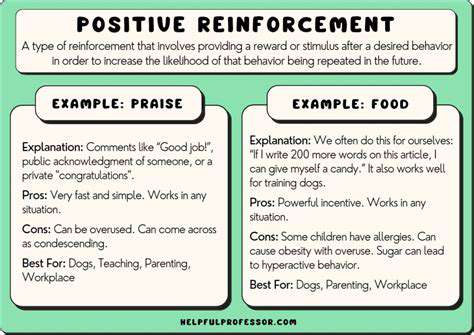Introducing Your Puppy to Other Pets: A Step by Step Guide
Catalog
Evaluate home for hazards before bringing a puppy.
Create a designated space for your puppy to feel secure.
Maintain cleanliness to prevent disease and promote health.
Introduce comfortable furnishings for puppy’s comfort and safety.
Use safety measures to ensure a safe play environment.
Utilize scent introduction to ease interactions with other pets.
Monitor puppy's body language during first encounters.
Establish clear boundaries to ensure safe interactions among pets.
Exercise patience when introducing your puppy to other pets.
Apply positive reinforcement for calm behavior during introductions.
1. Prepare a Safe Space for Your Puppy
Assess Your Home Environment
Before introducing your new puppy, it's important to evaluate your home for potential hazards. Look for items like electrical cords, toxic plants, and small objects that could be swallowed. Puppies are naturally curious and might investigate these items, leading to dangerous situations. By performing a thorough check, you can prevent accidents before they occur and create a safer environment.
Consider the layout of your home as well; ensure that areas are easy for your puppy to navigate, and think about where you will place their food and water bowls. This will help establish their space and reduce confusion as they adjust to their new surroundings.
Create a Designated Puppy Zone
Establishing a specific area in your home as the puppy zone is vital for training and comfort. This zone should be a contained area where the puppy can retreat to when needed, filled with their bed, toys, and specific items for chewing. Over time, this space will become familiar and comforting, helping them adjust to their new family.
Keep in mind that using puppy playpens or gates can help limit their access to other parts of the house, ensuring safety and minimizing the risk of accidents. This designated area also helps your other pets understand where your puppy is permitted to roam, aiding in smoother introductions.
Maintain Cleanliness and Hygiene
For a welcoming environment, maintain cleanliness to avoid the spread of disease. Puppies are susceptible to various infections until they are vaccinated, so disinfecting areas where your puppy will be is crucial. Regularly cleaning their zone and ensuring that toys are washed will contribute to their health and well-being.
Additionally, consider the hygiene of your other pets as well. Regular veterinary check-ups and vaccinations are essential in preventing the transmission of zoonotic diseases, ensuring that both your new puppy and existing pets can coexist in a safe space.
Introduce Comfortable Furnishings
When preparing a safe space, choose furniture that accommodates your puppy’s needs. Soft bedding will provide them a warm place to rest, while durable toys can keep them entertained and stimulate their developing minds. Opt for chew-proof items to discourage destructive behaviors as they adjust.
Also, arrange the space to reduce stress. Having a safe, quiet area away from hustle and bustle will help your puppy feel more secure, which is especially crucial during their initial days in a new environment; consider this a pivotal moment in their acclimatization process.
Utilize Safety Measures and Products
Incorporate safety measures and products into your puppy's designated area. Consider using non-slip mats to prevent slips and falls, especially in common areas where they will play. Puppy-proofing items such as corner guards or baby gates can further minimize risks of injuries as they explore.
In addition, explore pet-specific safety products like pet cameras, which allow you to monitor their behavior when you are not around. These devices can give you peace of mind while providing insights into how well your puppy is adapting to their new surroundings.
2. Gradual Introductions: The Importance of Scent

Scent: The Gateway to Familiarity
When bringing a new puppy into a household with other pets, understanding the role of scent can facilitate smoother introductions. Dogs have a keen sense of smell — estimated to be between 10,000 to 100,000 times more sensitive than humans. This incredible ability allows them to gain information about their environment and other animals through olfactory cues. By introducing your puppy to the scents of your existing pets, you create a context for their interaction that helps to ease tension.
To start, gather items that belong to your other pets, such as blankets, toys, or bedding, and allow your new puppy to sniff these items in a safe space. This kind of initial exposure can help your puppy develop a sense of familiarity and comfort with the scents that represent their new housemates.
Step-by-Step Scent Introduction Techniques
- Collect items with your existing pets' scents.
- Allow your new puppy to explore these items without direct supervision.
- Gradually introduce more scents through supervised interactions.
An effective approach for using scent in introductions involves systematic exposure and supervision. You might begin by placing the items in a neutral area, allowing your new puppy to investigate freely. Make sure to observe their body language during this exploration phase. A relaxed posture or playful behavior indicates comfort with the scents, while tense or aggressive behavior may suggest the need for further gradual exposure.
In addition to static items, consider using subtle scent trails by wiping a cloth on your existing pets and then letting your puppy sniff the cloth. This gives your puppy a chance to familiarize themselves with their new companions in a low-pressure situation.
Monitoring Interactions After Scent Introduction
Once your puppy has had some time to acclimate to the scents of the existing pets, the next step is to monitor their interactions closely. At this stage, it's important to supervise playdates and engagements to ensure safety for all pets involved. Observe how they react to each other in terms of body language and behavior. If they seem stressed or show signs of aggression, it may be necessary to take a step back and repeat the scent introduction process.
Providing positive reinforcement during interactions can also build confidence and foster healthy relationships. Use treats and praise to reward calm and friendly behavior. Over time, this approach can significantly enhance the bond between your puppy and existing pets, leading to a harmonious household environment.
3. Controlled Meetings: The First Encounter

Preparation Before the Meeting
Before initiating a meeting between your puppy and other pets, it's crucial to establish a safe environment. This means selecting a neutral location that has minimal distractions. Avoid areas where one of the pets may feel territorial, as this can lead to unnecessary stress or aggression. Additionally, ensuring all pets are up to date on their vaccinations can help prevent the spread of illness during interactions.
It's also beneficial to carefully assess the personalities of each pet involved. For instance, a shy puppy may require a more laid-back companion to ease its anxiety. Taking note of behavioral cues from all pets will assist in anticipating and managing their interactions. This preparation can lead to a smoother introduction and a more harmonious environment.
Introducing the Pets Gradually
Instead of a direct confrontation, consider a gradual introduction. Start by allowing your puppy and other pets to sniff each other's belongings, such as toys or blankets. This allows them to become familiar with each other's scents at their own pace. Following this, you can have them meet in a controlled manner, perhaps by keeping them on leashes at first.
During this initial encounter, supervision is key. The pet owners should remain alert for signs of anxiety or aggression, which may manifest as growling, stiff body posture, or avoidance behaviors. If either pet exhibits stress signals, it's important to separate them and try again later. Keep interactions short and positive to gradually build trust.
Monitoring Body Language
- Look for relaxed postures as signs of comfort.
- Identify tail movements; wagging indicates excitement.
- Be aware of excessive barking or growling, which may signify distress.
Understanding body language is vital during these initial meetings. Puppies are particularly expressive, and their reactions can often reveal their internal state. A relaxed posture, for instance, typically indicates that a puppy feels secure and comfortable in the presence of other pets.
On the contrary, if your puppy displays signs of fear, such as flattening its ears or tucking its tail, it's essential to intervene. Adjusting the meeting conditions can help alleviate their anxiety. Always reward calm behavior with treats or praise, reinforcing a positive atmosphere.
Creating Positive Associations
To ensure successful interactions, it is essential to create positive experiences for all pets involved. This can include generous treats during interactions to help associate meeting other pets with being rewarded. For instance, when your puppy remains calm while in the presence of another pet, give them a small treat or verbal praise.
Moreover, playtime can serve as a fantastic way to build positive associations. Engaging both pets in a fun game can significantly improve their relationship. Just be sure to monitor their energy levels and interactions, stepping in if necessary to prevent excitement from escalating into hyperactivity or stress.
Setting Boundaries and Rules
From the outset, it is important to set clear boundaries and rules for both the puppy and existing pets. This can include defining areas where pets are not allowed or establishing commands that signal when to stop or calm down. Giving your puppy commands like leave it or back can be helpful during interactions to maintain control.
Establishing these guidelines not only helps prevent scuffles but also teaches your puppy the importance of respecting personal space. Reinforce these boundaries consistently, so all pets understand the dynamics within the household. Over time, this can foster a sense of security and stability for both old and new pets.
Post-Meeting Reflection and Adjustment
After introductions, it's crucial to reflect on the interactions that occurred. Take note of what worked well and what needs adjusting in future meetings. For example, if one pet seemed overwhelmed, consider scaling back the intensity of their interactions. Each encounter provides valuable insights into how both pets respond to one another.
Moreover, thankfulness goes a long way. Celebrate small victories in the introductions, no matter how minor they may seem. Revisit the meeting strategy regularly, adjusting it according to each pet's behavior and comfort levels. In this way, you can ensure a continued positive relationship between your puppy and other pets.
4. Monitor Interactions and Set Boundaries
Understanding Your Pets’ Body Language
Interpreting body language is fundamental when introducing a puppy to other pets. Dogs exhibit various behavioral signals that indicate their comfort levels and emotional states. For instance, a wagging tail generally denotes happiness, whereas a stiff posture might signify anxiety. Understanding these signals can help you assess the interactions between your puppy and other animals, allowing you to step in if necessary.
It's not just dogs that communicate through body language. Cats, for example, often use their tails and ears to express their feelings. A raised tail may mean a cat is feeling friendly, while flat ears can indicate that they're feeling threatened. By observing the body language of both your puppy and other pets, you can create a safer and more harmonious environment during introductions.
Establishing Clear Boundaries
Setting boundaries is crucial in ensuring a safe interaction between your new puppy and existing pets. Initially, it's important to define spaces where each pet can retreat to feel secure. For example, providing a safe spot for your older pet away from the puppy's curious antics is essential. According to the American Kennel Club, having defined areas reduces stress among pets, allowing for a more peaceful coexistence.
When boundaries are established, it’s equally vital to monitor interactions closely. Always supervise the initial meetings to prevent potential conflicts. Should any aggressive or fearful behaviors arise, use a firm but calm voice to intervene. This method not only ensures safety but also communicates to both pets that certain behaviors are not acceptable. In time, as relationships develop, your pets will learn to respect each other's space, fostering a more enjoyable environment.
5. Patience and Positive Reinforcement

Understanding the Importance of Patience
When introducing a new puppy to other pets, patience is not just a virtue; it is a necessity. It can take time for pets to acclimate to each other's presence, so rushing the process can lead to anxiety and potential conflict. Each pet has its own comfort levels and personality traits, which can significantly impact the introduction process.
It's essential to recognize that some pets may be more territorial or cautious than others. Observing their reactions and adjusting your approach can make a huge difference. If a puppy or other pet seems overwhelmed, taking a step back and allowing them to take their time can often result in a smoother transition.
The Role of Positive Reinforcement
Positive reinforcement plays a crucial role in helping pets adjust to one another. Using treats or praise when pets exhibit calm or friendly behavior can reinforce these positive actions. For instance, giving a treat to your puppy when it sits quietly near the older dog encourages tranquility, which is instrumental during this adjustment period. Studies have shown that positive reinforcement techniques are far more effective than punitive methods in changing behavior.
Additionally, creating a rewarding environment for both pets can enhance the experience. This could involve playing together, using clicker training to mark desired behaviors, or ensuring that both pets feel equally loved and supported during interactions.
Setting Realistic Expectations
- Adjust expectations based on individual pet personalities.
- Understand that some pets may take longer to warm up than others.
- Prepare for potential setbacks; they are normal in the acclimatization process.
Setting realistic expectations is vital when introducing your puppy to other pets. Every pet is unique, and some may bond instantly while others may take several days or weeks to feel comfortable. Factors such as age, breed, and past experiences with other animals can determine how quickly each pet will adapt.
Keeping a flexible mindset and being prepared for various scenarios can help caregivers navigate the complexities of pet introductions. If challenges arise, being adaptable in your approach will greatly benefit all animals involved.
The Final Steps Towards a Harmonious Environment
The introduction process should culminate in forming a harmonious environment where all pets can coexist peacefully. This includes monitoring interactions and providing separate spaces for each pet in the home. Transitioning into shared spaces with supervision will help ensure that any lingering tensions can be addressed in real-time, fostering a positive space.
Regularly assessing the dynamics between the pets will help alleviate any emerging issues. It's wise to continuously reinforce positive behaviors as they develop, helping to solidify newly formed relationships. Additionally, frequent check-ins with a veterinarian or a pet behaviorist can offer valuable insights and personalized strategies to maintain harmony among your pets.

